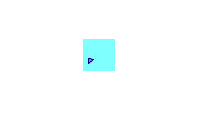segmentationConfusionMatrix
Confusion matrix of multi-class pixel-level image segmentation
Description
confusionMatrix = segmentationConfusionMatrix(LPred,LTruth)LPred and
ground truth pixel labels LTruth.
Examples
Input Arguments
Output Arguments
Tips
You can calculate semantic segmentation metrics such as the Jaccard score and classification accuracy from the confusion matrix by using the
evaluateSemanticSegmentationfunction.You can use this function in block-based image processing workflows such as
blockedImage. For example, you can perform semantic segmentation and calculate the confusion matrix for a block in the same call to theapplyfunction.
Version History
Introduced in R2020b
See Also
semanticseg | dice | jaccard | semanticSegmentationMetrics | evaluateSemanticSegmentation | plotconfusion (Deep Learning Toolbox)

